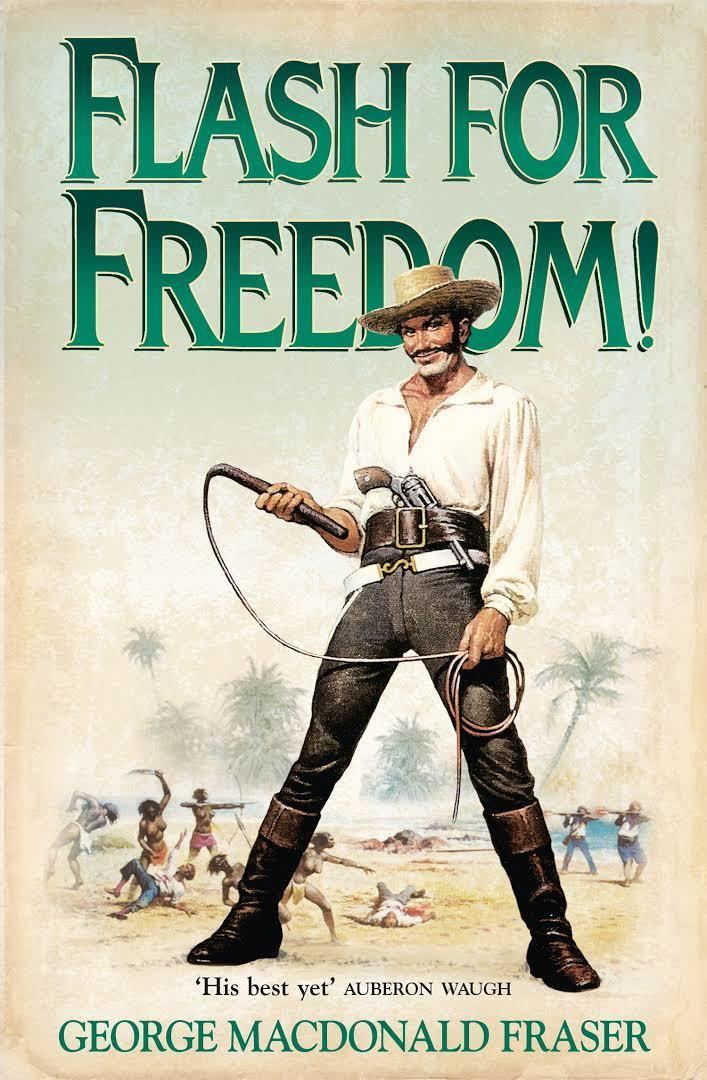8.4 /10 1 Votes8.4
Language English Publication date 1971 Genre Historical drama | 4.2/5 Goodreads Country United Kingdom Publisher Barrie & Jenkins Originally published 1971 Page count 272 | |||||||||||||||||||||||||||||||||
 | ||||||||||||||||||||||||||||||||||
Similar | ||||||||||||||||||||||||||||||||||
Flash for Freedom! is a 1971 novel by George MacDonald Fraser. It is the third of the Flashman novels.
Contents
Plot introduction
Presented within the frame of the supposedly discovered historical Flashman Papers, this book describes the bully Flashman from Tom Brown's School Days. The papers are attributed to Flashman, who is not only the bully featured in Thomas Hughes' novel, but also a well-known Victorian military hero. The book begins with an explanatory note detailing the discovery of these papers and also discussing the supposed controversy over their authenticity. A reference is made to an article in The New York Times from 29 July 1969, which puts these claims to rest. Fraser hints that the article supports the papers' authenticity, although the opposite is true.
Flash for Freedom begins with Flashman considering an attempt at being made a Member of Parliament and continues through his involvement in the Atlantic slave trade, the Underground Railroad, and meeting a future president, detailing his life from 1848 to 1849. It also contains a number of notes by Fraser, in the guise of editor, giving additional historical information on the events described.
Plot summary
From Dahomey to the slave state of Mississippi, Flashman has cause to regret a game of pontoon with Benjamin Disraeli and Lord George Bentinck. From his ambition for a seat in the House of Commons, he has to settle instead for a role in the West African slave trade, under the command of Captain John Charity Spring, a Latin-spouting madman. Captured by the United States Navy, Flashman has to talk his way out of prison by assuming the first of his many false identities in America. After a visit to Washington, D.C., he escapes his Navy protectors in New Orleans and hides in a brothel run by an amorous madame, Susie Willinck. He is again taken into custody, this time by members of the Underground Railroad. Travelling up the Mississippi River with a fugitive slave ends badly once again, and the rest of the story has Flashman as a slave driver on a plantation, a potential slave himself, and a slave stealer fleeing from vigilantes; on the run, he meets, and is assisted by, Abraham Lincoln (still a junior congressman at the time). Eventually he ends up back in New Orleans at the mercy of Spring. This story is continued in Flashman and the Redskins.
At the end of the novel, Flashman claims that his escape with Cassy across the Ohio River was the inspiration for the anti-slavery novel, Uncle Tom's Cabin, with the names altered and the story focusing on the slave Cassy rather than Flashman.
Fictional characters
Historical characters
Background
Fraser says the idea for the climactic trial sequence came from his wife.
